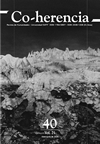Literary Reception in Light of the Theory of Resonance: Available and Unavailable Works and Mediopassive Readers
Main Article Content
Keywords
Ethics of fiction, reception theory, literary criticism, cultural cancellation, critical theory
Abstract
Contemporary phenomena around the visibility of authors and their works, which relate to the responsibilities of the various agents in the literary field, continually present questions regarding the mechanisms and expectations of the exercise of critical reading by the readers. This article aims to explain the descriptive and normative performances that the concept of resonance offers for this exercise, a concept proposed by Hartmut Rosa within his critical sociology of the good life. The guiding question is: how does the idea of a resonant link with the work enrich the understanding and modeling of critical reading? To answer this, the article will first expose the concept of resonance; next, it will illustrate three forms of relationships to the work through analogies with the cases portrayed in the documentary Grizzly Man by Werner Herzog, in the novel Rayuela by Julio Cortázar and in the short story “Fiction” by Alice Munro. Finally, as a response, the thesis will be presented that the theory of resonance allows us to conceptualize the (desirable) agency of the reader. This agency is understood in terms of a mediopassivity or medioactivity, which involves both exposure to different instances of mediation and the materialization of an ethical judgment about the literary work, as put forward by Wayne C. Booth.
Downloads
References
Bachelard, G. (1974 [1957]). La poétique de l’espace. P.U.F.
Bachelard, G. (1992 [1948]). La terre et les rêveries du repos. Essai sur les images de l’intimité. José Corti.
Blanchot, M. (2008). La conversación infinita (I. Herrera, Trad.). Arena Libros.
Bollack, J. (2000). Sens contre sens : Comment lit-on ? : entretiens avec Patrick Llored. Passe du vent.
Booth, W. C. (1988). The Company We Keep. An Ethics of Fiction. University of California Press.
Booth, W. C. (2005 [1988]). Las compañías que elegimos. Una ética de la ficción (A. Dilon, Trad.). FCE.
Bourdieu, P. (1997). Las reglas del arte. Génesis y estructura del campo literario (T. Kauf, Trad.). Anagrama.
Cortázar, J. (2017 [1963]). Rayuela. Alfaguara.
Dickinson, E. (1960). The Complete Poems of Emily Dickinson (T. H. Johnson, Ed.). Little, Brown and Co.
Díez Fischer, F. (2014). La repercusión como fundamento de la actividad imaginaria según Paul Ricœur. Studium. Filosofía y Teología, (34), 313-333. https://n9.cl/57xjr.
Dimock, W. C. (1997). A Theory of Resonance. PMLA/Publications of the Modern Language Association of America, 112(5), 1060-1071. https://doi.org/10.2307/463483.
Dyson, K. (2019). Resonant Reading: From Anxiety to Attunement. Pedagogy, 19(3), 537-542. https://doi.org/10.1215/15314200-7615536.
Eco, U. (1997). Seis paseos por los bosques narrativos (H. Lozano Miralles, Trad.). Lumen.
Felski, R. (2020a). Hooked. Art and Attachment. The University of Chicago Press.
Felski, R. (2020b). Good Vibrations. American Literary History, 32(2), 405-415. https://doi.org/10.1093/alh/ajaa010.
Freixas, L. (2018, febrero 21). ¿Qué hacemos con ‘Lolita’? El País. https://n9.cl/dnxs9.
Gadamer, H.-G. (1991). L’Art de comprendre. Écrits II : Herméneutique et Champ de l’expérience humaine. Aubier.
Genette, G. (1982). Palimpsestes : la littérature au second degré. Seuil.
Herzog, W. (Director). (2005). Grizzly Man [Película]. Lions Gate Films.
Iser, W. (1975). Die Appellstruktur der Texte. Unbestimmtheit als Wirkungsbedingung literarischer Prosa. En R. Warning (Ed.), Rezeptionsästhetik: Theorie und Praxis (pp. 228-252). W. Fink.
Jauss, H. R. (2013). La historia de la literatura como provocación (J. Godó Costa y J. L. Gil Aristu, Trads.). Gredos.
Kafka, F. (1999). Briefe 1900-1912 (H.-G. Koch, Ed.). Fischer.
Luque, P. (2020). Las cosas como son y otras fantasías. Moral, imaginación y arte narrativo. Anagrama.
Minkowski, E. (1999 [1936]). Vers une cosmologie. Fragments philosophiques. Payot & Rivages.
Munro, A. (1974, agosto 18), “Alice Munro’s Rural Roots”, entrevista de Harry Boyle [archivo de audio]. CBC Digital Archives. https://n9.cl/cqge8.
Munro, A. (2013). Demasiada felicidad (F. Casas, Trad.). Lumen.
Radish, I. (2023, octubre 12). Debatte um Adania Shibli: Was außerhalb der Literatur passiert. Zeit Online. https://n9.cl/ga7n4d.
Ricœur, P. (2002 [1986]). Del texto a la acción. Ensayos de hermenéutica II (P. Corona, Trad., 2.ª ed.). FCE.
Rilke, R. M. (2007). Nuevos poemas (F. Bermúdez-Cañete, Trad., 3.a ed.). Hiperión.
Reckwitz, A. y Rosa, H. (2022). Tardomodernidad en crisis. Por un horizonte social alternativo (A. Gros, Trad.). NED.
Rosa, H. (2019). Resonancia. Una sociología de la relación con el mundo (A. Gros, Trad.). Katz.
Rosa, H. (2020). Lo indisponible (A. Gros, Trad.). Herder.
Rosa, H. (2022). Estabilización dinámica, el acercamiento triple A a la vida buena y el concepto de resonancia. En J. P. Pino-Posada y A. F. Vélez-Posada (Eds.), La vida buena, sus técnicas y sus figuraciones (pp. 17-42). Universidad EAFIT. https://doi.org/10.17230/9789587207873ch1.
Sapiro, G. (2021). ¿Se puede separar la obra del autor? Censura, cancelación y derecho al error (V. Garrido, Trad.). Clave Intelectual.
Todorov, T. (2004 [1968]). Poética estructuralista (R. Pochtar, Trad.). Losada.
Williams, J. (2019 [1965]). Stoner (C. Gardini, Trad.). Fiordo.





